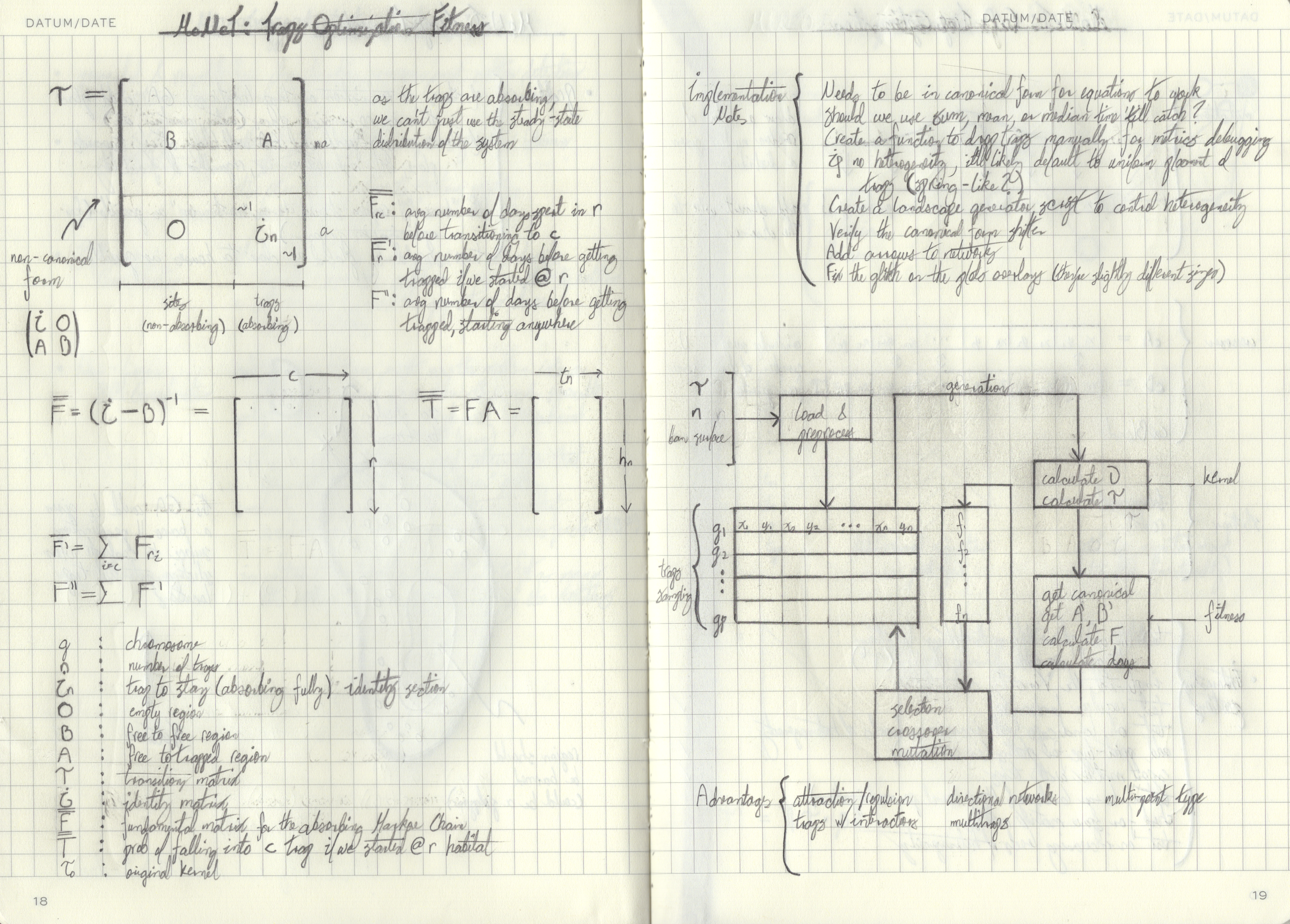
Héctor M. Sánchez C.

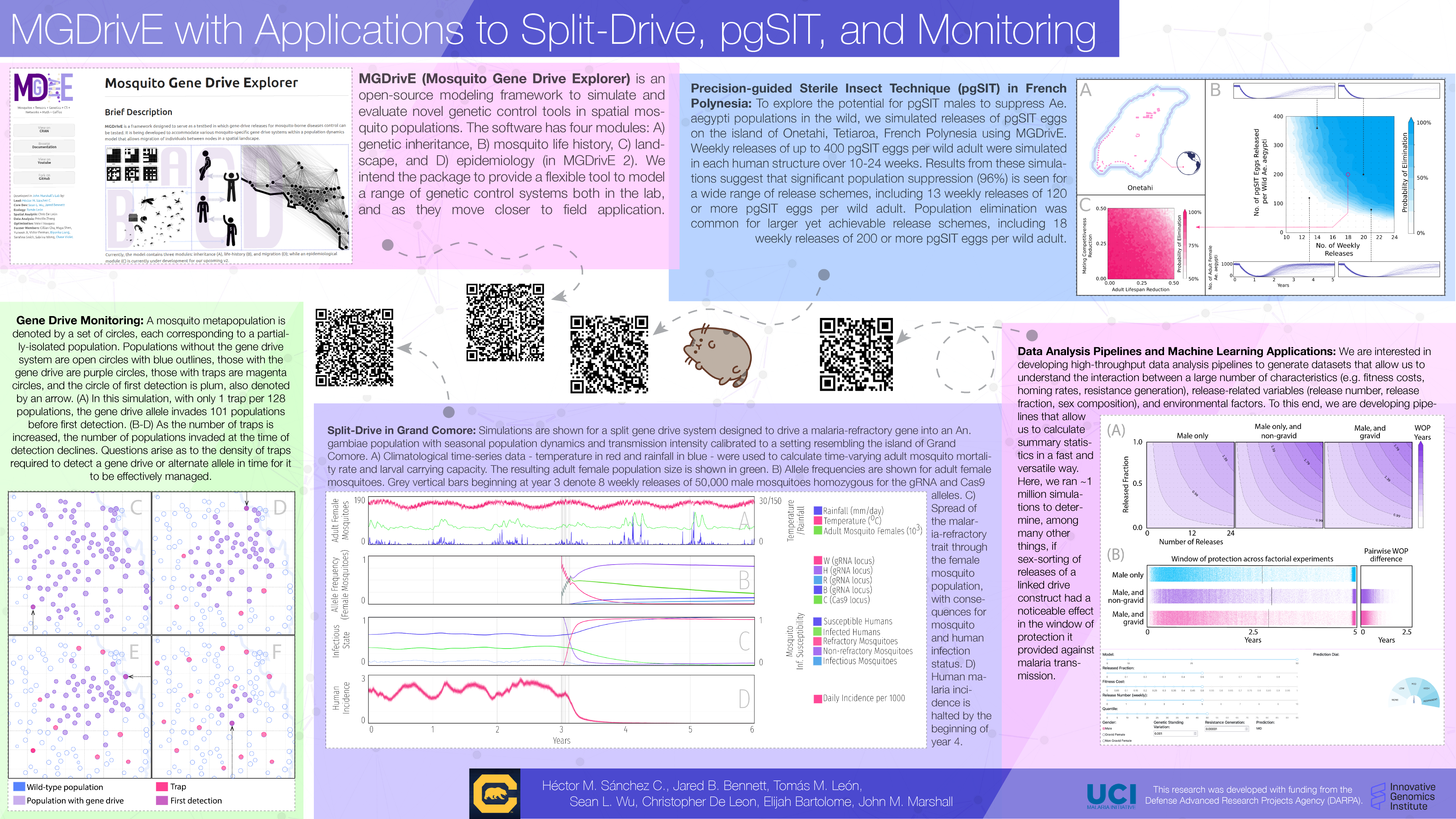
I. Mosquito Landscape Analysis
1) Mosquito-Borne Diseases
2) Gene Drives' Surveillance
3) Heterogeneity in Spatial Resources
4) Research Question

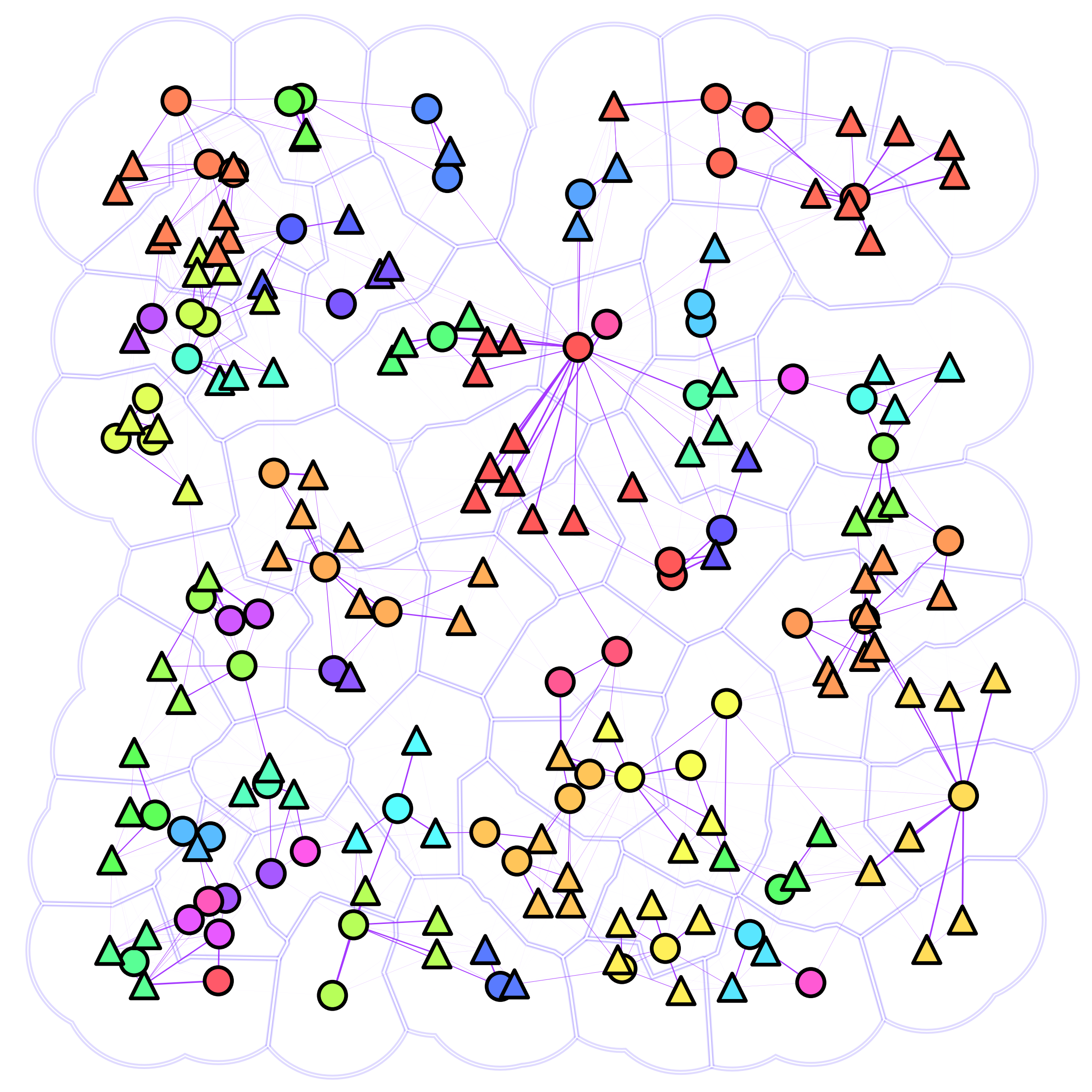
Given a heterogeneous environment and a limited number of traps, where should we place them?

II. Migration Model Description
1) Objectives and Assumptions
2) Migration Network
3) Migration Network with Traps
4) Fitness Function
5) Ok, so why is useful?
- O: To define a metric that allows us to optimize traps' locations in complex environments.
- A: Mosquitos are Markov walkers in a network-based landscape.
- A: The landscape is static over time.
- A: Traps are fully absorbing.




Finally, we can calculate the average maximum time it would take for us to trap a mosquito from anywhere in the landscape





III. Trap Placement Optimization
1) Fitness Function
2) Genetic Algorithm
3) Optimization Cycle
4) Demo Results
Average maximum time it takes for mosquitoes to fall into traps from anywhere in the landscape (G).



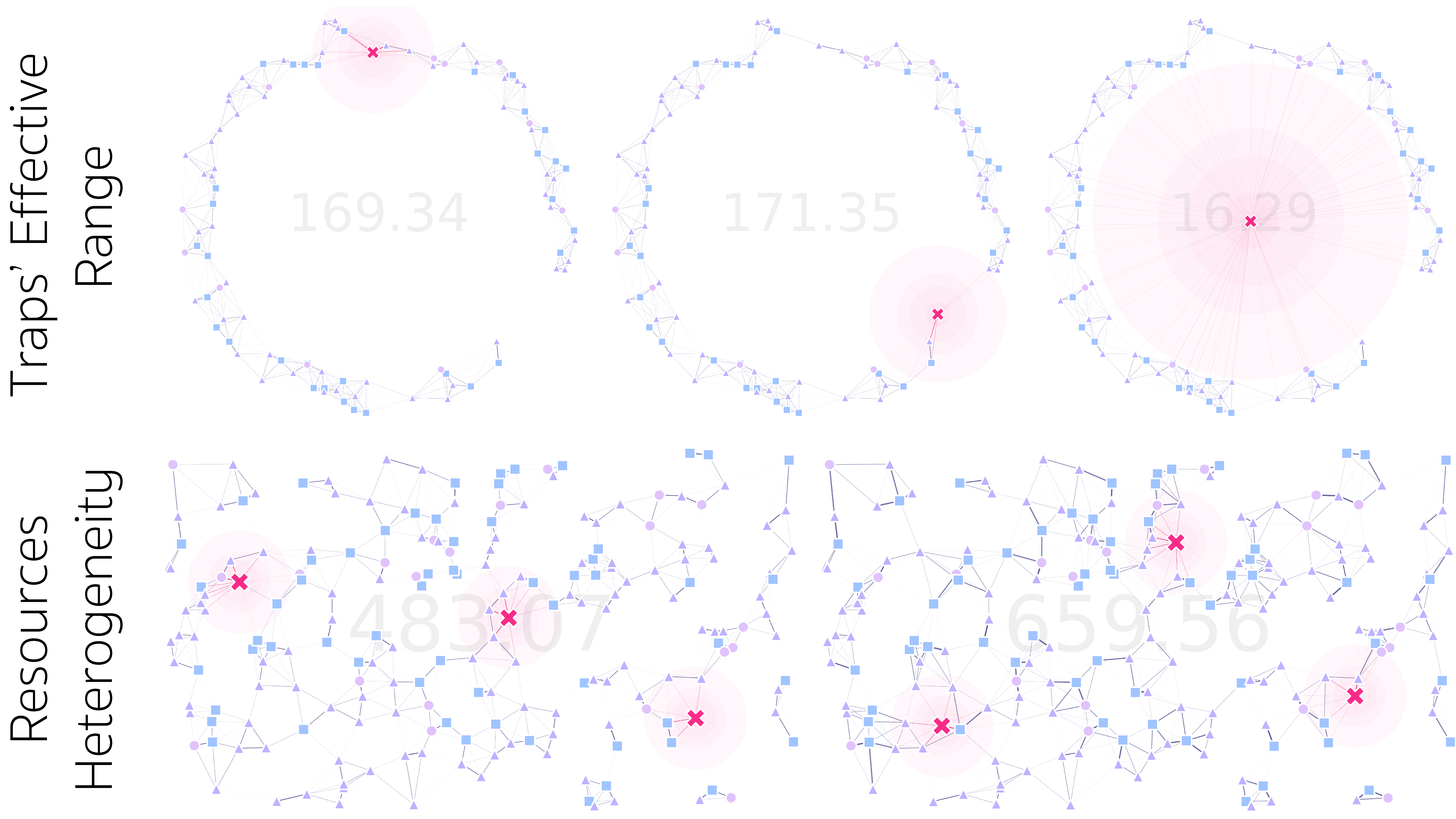
IV. Current Status and Future Work
1) Project's Status
2) Extensions and Neat Properties
3) The Future



Proof of concept is working and pypi package is under development!
(base code ~70%, docs ~50%, unit tests ~20%)
# Sites information ------------------------------------------------------------
pts = (
(0.0, 0.0, 0),
(2.0, 0.5, 0),
(2.5, 1.5, 0),
)
points = pd.DataFrame(pts, columns=('x', 'y', 't'))
# Traps settings ---------------------------------------------------------------
trp = (
(2.5, 0.75, 0, 0),
(0.0, 0.50, 0, 0)
)
traps = pd.DataFrame(trp, columns=('x', 'y', 't', 'f'))
tKernels = {0: {'kernel': srv.exponentialDecay, 'params': {'A': 0.5, 'b': 3}}}
# Generating and using landscape -----------------------------------------------
lnd = srv.Landscape(points, traps=traps, trapsKernels=tKernels)
lnd.calcFundamentalMatrix()
fitness = lnd.getDaysTillTrapped()
(fig, ax) = plt.subplots(figsize=(15, 15))
lnd.plotSites(fig, ax)
lnd.plotMigrationNetwork(fig, ax)
lnd.plotTraps(fig, ax)
lnd.plotTrapsNetwork(fig, ax)
fig.show()
- Multiple trap types are straightforward.
- Non-movable traps are simple.
- Can use pre-computed migration matrices.
- Can export migration matrices with traps for external use.
- Easy to create new cost functions.
- Matrices are being implemented in numpy for speed and memory.
- [L] Repellency
- [L] Better pseudo-landscape generators (Poisson)
- [M] Male/Female migration kernels
- [M] 3D Landscape
- [M] Parallelization
- [M] Take into account topological features.
- [H] Multi-objective optimization


Team, and Questions


Héctor M. Sánchez C.
John Marshall, David L. Smith
(sanchez.hmsc@berkeley.edu | chipdelmal.github.io)
Thanks to Conversations with: Tomas León, Jared Bennett, Sean L. Wu, Eileen Jeffrey, Elijah Bartolome, Chris De Leon, Gaming Friends




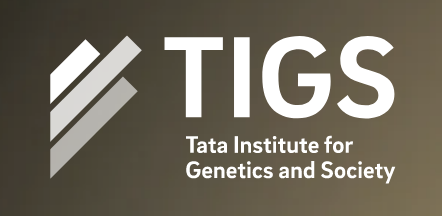

Epilogue
Notebook Scribbles

